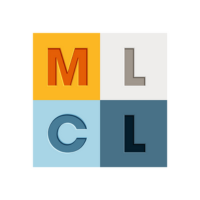People frequently ask if they can trademark something or if something is patented or copyrighted and very often what they are truly asking is more generally if it has some kind of intellectual property protection. The terms “patent,” “trademark,” and “copyright” are often used interchangeably because it is unclear to those not familiar with intellectual property what the differences and purposes are in these forms of protection. The encouraging part of this question for practitioners is that by asking the question, at least there’s a recognition of the importance of protection for different forms of intellectual property..
So, what are the differences and what do these types of intellectual property protect?
Patents
The type of patents that most people are familiar with are utility patents. Utility patents are used to protect a “new and useful process, machine, article of manufacture, or composition of matter, or any new and useful improvement thereof.” (35 U.S.C. § 101) The right conferred when a patent is granted is the ability to prevent others from “making, using, offering for sale, or selling” the invention in the United States or importing the invention into the United States. (35 U.S.C § 154) It’s important to understand that the right is a right to exclude others, not a right for the patent owner to practice the invention themselves. This right is granted for a limited time in exchange for public disclosure of the invention. Once the term of protection has ended, the patented invention enters the public domain. In addition to utility patents, there are design patents which protect new, original, and ornamental design for an article of manufacture and plant patents which protect asexually reproduced, distinct and new plant varieties. It’s important to make sure you choose the appropriate type of patent to protect your innovation.
It is also important to note that not everything is considered patentable subject matter. There has been a lot of discussion recently about what is encompassed as patentable subject matter, but generally the subject matter that cannot be patented includes mathematical formulas, naturally occurring substances, laws of nature, and processes done entirely with the human body. Furthermore, patents cannot protect mere ideas or suggestions.
Broadly speaking, patent protection safeguards inventions, such as chemical compositions like pharmaceutical drugs, mechanical processes like complex machinery, or machine designs that are new, unique, and usable in some type of industry, from other parties copying, making, using, or selling the invention without the patent owner’s consent.
Trademarks
Trademarks can be any word, phrase, symbol, or design that identify the source of your goods or services. Your trademark is how consumers recognize you in the marketplace and it allows you to distinguish yourself from competitors as well as build brand recognition for your business. There are common law rights that apply as soon as you begin using your mark in commerce. The limitation to relying on common law rights is that these rights can only be enforced in the specific area where you used your trademark. However, federal or state trademark registration affords broader rights and protections. With a federal registration, trademark owners establish rights throughout the United States and its territories.
While the most common trademarks are words, phrases, symbols or designs, there are some instances of more unusual marks such as sounds or colors. Do you know the MGM Lion Roar or the Law and Order chimes? How about Tiffany blue or UPS brown? These all have been protected as trademarks. These are certainly less common, but they still hold true to the function and purpose intended of a trademark, they identify the source of the goods and services and thus are deserving of trademark protection.
Trademark protection safeguards against infringement which is a type of unfair competition. Federal trademark law provides protection against someone else using the same or a confusingly similar mark, on the same or closely related goods or services in order to prevent confusion in the marketplace as to the source of the goods or services.
Copyrights
Copyrights protect artistic, literary or intellectually created works. Copyrightable works include:
- literary, musical and dramatic works;
- pantomimes and choreographic works;
- pictorial, graphic and sculptural works (including the nonutilitarian design features of useful articles);
- motion pictures and other audiovisual works;
- sound recordings;
- computer programs;
- certain architectural works; and
- compilations of works and derivative works.
Unlike patents and trademarks, creators of these works have copyright protection the instant they have created and fixed their work in a tangible form, for example recording a song or writing down a poem. As such, these works enjoy a certain amount of protection even without a registration. However, registering your work with the Copyright Office is a good idea because it’s necessary in order to sue an infringer and it allows you to recover statutory damages.
Copyright protection is only for expressions of ideas, not the ideas themselves. Additionally, in order to be protectible, a work must be “original.” The work must also pass a certain threshold of creativity so as not to be too elementary in nature (i.e., it cannot be a common shape or a short phrase).
What’s the Right Intellectual Property Protection for Me?
The answer is “it depends.” As you can see, the different types of intellectual property are intended to protect different things. For businesses, it is likely that some combination of these protections will be necessary to protect certain assets. It may even be that multiple forms of intellectual property could be used. For example, the Coca-Cola® bottle design is a trademark and was also a design patent and Tarzan is a trademark and the story is protected by copyright. Maybe you’re thinking a certain type of intellectual property protection doesn’t apply to you at all. No type of intellectual property is one-size fits all and it is important to make sure the appropriate pieces are included in your business’ intellectual property portfolio. Working with an intellectual property attorney who can help you navigate the different types of intellectual property and figure out how to protect your important business assets. Contact an MLCL attorney to help you develop the appropriate intellectual property portfolio for your business.

